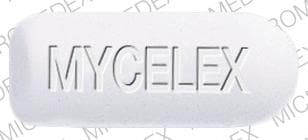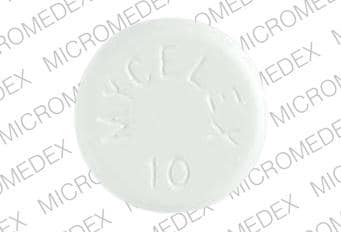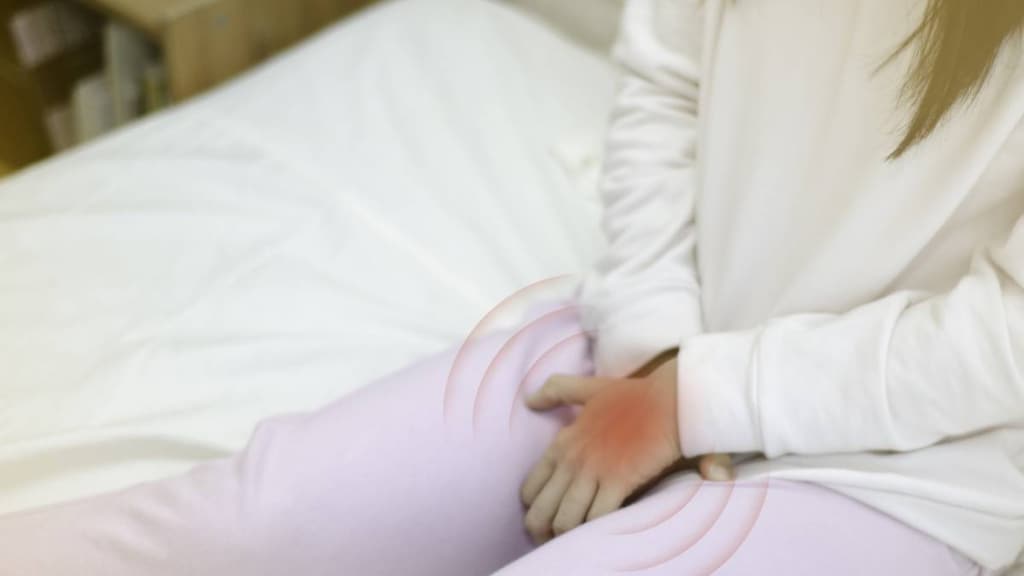Dosage Forms
Excipient information presented when available (limited, particularly for generics); consult specific product labeling. [DSC] = Discontinued product
Cream, External:
CareAll Clotrimazole: 1% (28 g) [contains cetyl alcohol, methylparaben, propylene glycol, propylparaben]
Clotrimazole GRx: 1% (14 g) [contains benzyl alcohol, cetyl alcohol, polysorbate 80]
Desenex: 1% (30 g)
Lotrimin AF: 1% (24 g [DSC]) [contains benzyl alcohol, cetyl alcohol]
Lotrimin AF For Her: 1% (24 g)
Pro-Ex Antifungal: 1% (42 g) [contains cetyl alcohol, edetate trisodium, methylparaben, trolamine (triethanolamine)]
Shopko Athletes Foot: 1% (28.4 g) [contains benzyl alcohol, cetostearyl alcohol]
Generic: 1% (15 g, 30 g, 45 g)
Cream, Vaginal:
3 Day Vaginal: 2% (21 g) [contains benzyl alcohol, cetyl alcohol]
Clotrimazole 3 Day: 2% (22.2 g)
Gyne-Lotrimin: 1% (45 g) [contains benzyl alcohol]
Gyne-Lotrimin 3: 2% (21 g) [contains benzyl alcohol, cetyl alcohol]
Generic: 1% (45 g)
Ointment, External:
Alevazol: 1% (56.7 g)
Solution, External:
Generic: 1% (10 mL, 29.57 mL, 30 mL)
Pharmacology
Mechanism of Action
Binds to phospholipids in the fungal cell membrane altering cell wall permeability resulting in loss of essential intracellular elements
Pharmacokinetics/Pharmacodynamics
Absorption
Topical: Negligible through intact skin; Intravaginal: 3% to 10% of dose is absorbed
Time to Peak
Serum: Vaginal cream: ~24 hours
Use: Labeled Indications
Topical cream and solution: Topical treatment of candidiasis due to Candida albicans and tinea versicolor caused by Malassezia furfur
OTC labeling: Topical treatment of tinea pedis, tinea cruris, and tinea corporis
Topical ointment: OTC labeling: Topical treatment of tinea cruris, C. albicans, tinea corporis, and tinea pedis
Vaginal cream: Treatment of vaginal yeast infections and relief of associated external vulvar itching and irritation
Vaginal tablet [Canadian product]: Treatment of vaginal candidiasis
Use: Off Label
Otomycosisc
Data from a limited number of patients studied suggest that clotrimazole may be beneficial for the treatment of otomycosis Khan 2013, Paulose 1989. Clinical experience also suggests the utility of clotrimazole in the treatment of otomycosis Goguen 2019.
Contraindications
Hypersensitivity to clotrimazole or any component of the formulation.
OTC labeling: When used for self-medication, do not use vaginal cream if you have never had a vaginal yeast infection diagnosed by a doctor.
Documentation of allergenic cross-reactivity for imidazole antifungals is limited. However, because of similarities in chemical structure and/or pharmacologic actions, the possibility of cross-sensitivity cannot be ruled out with certainty.
Dosage and Administration
Dosing: Adult
Cutaneous candidiasis: Topical:
Cream, solution: Apply to affected area twice daily; if no improvement occurs after 4 weeks of therapy, re-evaluate diagnosis.
Ointment (OTC labeling): Apply to affected area twice daily for 2 weeks.
Otomycosis (off-label use): Topical: Solution: Instill 4 to 5 drops into the affected ear(s) twice daily for 10 to 14 days (Chander 1996; de la Paz Cota 2018; Goguen 2019); application should begin after thorough cleansing of the ear canal by the provider. Reassess after completion of therapy; if fungal elements are still present, repeat cleansing of the ear canal followed by another 10- to 14-day course of clotrimazole and reassessment. Several cycles of ear cleansing followed by topical therapy and reassessment may be required; persistent otomycosis should be managed by an otolaryngologist (Goguen 2019).
Tinea corporis, tinea cruris, tinea pedis (OTC labeling): Topical: Cream, ointment, solution: Apply to affected area twice daily for 2 weeks (tinea cruris) or 4 weeks (tinea corporis, tinea pedis).
Tinea versicolor: Topical: Cream, solution: Apply to affected area twice daily; if no improvement occurs after 4 weeks of therapy, re-evaluate diagnosis.
Vulvovaginal candidiasis: Intravaginal:
Cream (1%): Insert 1 applicatorful of 1% vaginal cream daily (at bedtime) for 7 consecutive days. Note: Guidelines recommend a duration of 7 to 14 days (CDC [Workowski 2015]). May also apply externally twice daily for 7 days as needed for itching and irritation.
Canesten 6 day intravaginal cream (1%) [Canadian product]: Insert 1 applicatorful of 1% vaginal cream daily (preferably at bedtime) for 6 consecutive days.
Cream (2%): Insert 1 applicatorful of 2% vaginal cream daily (preferably at bedtime) for 3 consecutive days. May also apply externally twice daily for 7 days as needed for itching and irritation.
Cream (10%) [Canadian product]: Insert 1 applicatorful of 10% vaginal cream as a single dose (preferably at bedtime)
Tablet [Canadian product]:
500 mg tablet: Insert 1 vaginal tablet as a single dose (preferably at bedtime)
200 mg tablet: Insert 1 vaginal tablet once daily for 3 consecutive days (preferably at bedtime)
Note: When tablets are used in conjunction with an external cream, apply cream over the irritated area 1 to 2 times/day as needed for up to 7 consecutive days
Dosing: Geriatric
Refer to adult dosing.
Dosing: Pediatric
Cutaneous candidiasis: Topical ointment: Children ≥2 years and Adolescents: Topical: Apply twice daily (morning and night) for 2 weeks.
Tinea corporis, tinea cruris, and tinea pedis: Topical cream, ointment, or solution: Children ≥2 years and Adolescents: Topical: Apply twice daily (morning and night). Duration: 2 weeks for tinea cruris; 4 weeks for tinea corporis and tinea pedis
Vulvovaginal candidiasis: Children ≥12 years and Adolescents: Intravaginal:
Cream (1%): Insert 1 applicatorful of 1% vaginal cream daily (preferably at bedtime) for 7 consecutive days; some patients may require 14 days (CDC [Workowski 2015]). May also apply externally twice daily for 7 days as needed for itching and irritation.
Cream (2%): Insert 1 applicatorful of 2% vaginal cream daily (preferably at bedtime) for 3 consecutive days. May also apply externally twice daily for 7 days as needed for itching and irritation.
Administration
Intravaginal: For vaginal use only
Cream: May also be applied externally for itching and irritation of surrounding areas. Do not use tampons, douches, spermicides, or other vaginal products or have vaginal intercourse during treatment.
Vaginal tablet [Canadian product]: Should be inserted deep into the vagina to ensure tablet dissolves completely. If tablet does not dissolve completely within one night, consider use of a vaginal cream.
Topical: For external use only; avoid contact with eyes and application to severely cracked or irritated areas. Cleanse and thoroughly dry area prior to application. Apply a thin layer to affected area. For treatment of athlete's foot, pay special attention to spaces between the toes; wear well-fitting, ventilated shoes and change shoes and socks at least once a day.
Storage
Recommendations vary by manufacturer. Some products are only recommended to be stored at controlled room temperature and others may be stored under refrigeration or at room temperature; refer to manufacturer's labeling for product-specific storage recommendations.
Clotrimazole (Topical) Images
Drug Interactions
Progesterone: Antifungal Agents (Vaginal) may diminish the therapeutic effect of Progesterone. Avoid combination
Sirolimus: Clotrimazole (Topical) may increase the serum concentration of Sirolimus. Monitor therapy
Tacrolimus (Systemic): Clotrimazole (Topical) may increase the serum concentration of Tacrolimus (Systemic). Monitor therapy
Adverse Reactions
Vaginal:
1% to 10%: Genitourinary: Vulvovaginal burning
<1% (Limited to important or life-threatening): Burning sensation of the penis (of sexual partner), polyuria, pruritus vulvae, vaginal discharge, vulvar pain, vulvar swelling
Warnings/Precautions
Concerns related to adverse effects:
- Local irritation: If irritation/sensitivity develops, discontinue therapy and institute appropriate alternative therapy.
Dosage form specific issues:
- Benzyl alcohol and derivatives: Some dosage forms may contain benzyl alcohol; large amounts of benzyl alcohol (≥99 mg/kg/day) have been associated with a potentially fatal toxicity (“gasping syndrome”) in neonates; the “gasping syndrome” consists of metabolic acidosis, respiratory distress, gasping respirations, CNS dysfunction (including convulsions, intracranial hemorrhage), hypotension and cardiovascular collapse (AAP ["Inactive" 1997]; CDC 1982); some data suggests that benzoate displaces bilirubin from protein binding sites (Ahlfors 2001); avoid or use dosage forms containing benzyl alcohol with caution in neonates. See manufacturer's labeling.
Other warnings/precautions:
- Appropriate use: Topical: For external use only; avoid contact with the eyes. Not effective for treatment of scalp or nails. When used for self-medication, discontinue use and contact a healthcare provider if there is no improvement in 2 weeks (jock itch) or 4 weeks (athlete's foot, ringworm).
- Self-medication (OTC use): Vaginal: When used for self-medication (OTC), consult a health care provider before use if experiencing vaginal itching and discomfort for the first time, frequent vaginal yeast infections (eg, monthly, 3 in 6 months), or exposure to HIV. A mild increase in vaginal itching, burning, or irritation may occur with use; a health care provider should be consulted before switching to another agent if patient does not experience complete relief. Discontinue use and contact a health care provider if symptoms do not improve in 3 days or last more than 7 days, or if symptoms of a more serious condition occur (eg, abdominal pain, back/shoulder pain, fever, chills, nausea, vomiting, foul-smelling vaginal discharge). For vaginal use only; do not use tampons, douches, spermicides, or other vaginal products or have vaginal intercourse during treatment.
Pregnancy
Pregnancy Considerations
Following topical and vaginal administration, small amounts of imidazoles are absorbed systemically (Duhm 1974). Vaginal topical azole products (7-day therapies only) are the preferred treatment of vulvovaginal candidiasis in pregnant women. Vaginal products may weaken latex condoms and diaphragms (CDC [Workowski 2015]) and may not be effective in preventing pregnancy or sexually transmitted diseases.
Patient Education
What is this drug used for?
- It is used to treat fungal infections of the skin.
- This drug is used to treat vaginal yeast infections.
- It may be given to you for other reasons. Talk with the doctor.
Other side effects of this drug: Talk with your doctor right away if you have any of these signs of:
- Application site irritation or edema
- Burning
- Blisters or sores that ooze, drain, or crust over
- Nausea
- Vomiting
- Foul-smelling vaginal discharge
- Abdominal pain
- Signs of a significant reaction like wheezing; chest tightness; fever; itching; bad cough; blue skin color; seizures; or swelling of face, lips, tongue, or throat.
Note: This is not a comprehensive list of all side effects. Talk to your doctor if you have questions.
Consumer Information Use and Disclaimer: This information should not be used to decide whether or not to take this medicine or any other medicine. Only the healthcare provider has the knowledge and training to decide which medicines are right for a specific patient. This information does not endorse any medicine as safe, effective, or approved for treating any patient or health condition. This is only a brief summary of general information about this medicine. It does NOT include all information about the possible uses, directions, warnings, precautions, interactions, adverse effects, or risks that may apply to this medicine. This information is not specific medical advice and does not replace information you receive from the healthcare provider. You must talk with the healthcare provider for complete information about the risks and benefits of using this medicine.




